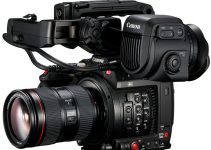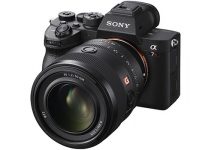There are loads of excellent pro level lights available on the market these days providing awesome power, second to none color accuracy and total flexibility on set. But the only problem is that the majority of these lights are still going to cost you an arm and a leg. So, how do you get around that cost?
Well, even using some dirt cheap LED panels could be a viable option as long as you take care of the dreaded color cast these units tend to produce. By getting rid of this tedious drawback, you’ll be able to capture some amazing images even when working on a shoestring budget. The following video produced by NextWaveDV will show you exactly how to do so and get the most out of virtually any cheap LED light you have at your disposal.
The concept behind this workflow is very simple indeed and shouldn’t take you more than just a few minutes. First and foremost, you’ll need to manually set your camera to the white balance of the LED light, then point it at a white wall and take a picture.
To find the exact color bias, you’ll need to import the still image into Photoshop and bump the saturation all the way up. This step should make any color tint instantly visible. After that, the solution is to gel the light with the color complementing its bias.
Most inexpensive LED lights tend to show a green tint due to the fact that in the color spectrum green tends to be one of the brightest colors. Depending on the particular bias light shows, you’ll need to utilize minus or plus green cine filters respectively to utterly eliminate the cast.
As a rule, this particular gels can also be combined with CTO or CTB filters to simulate the desired color temperature so don’t be afraid to experiment and see what type of results you can get.
Once you find the perfect match for your LED light, you can jot down the required compensation values of the gels you’ve applied for each of your lights thus saving the hassle of repeating the same process on the next shoot.
That’s basically everything you’ll have to do to calibrate your cheap LED panels and improve significantly the quality of the emitted light. As Tony Reale points out in the above video, this workflow isn’t perfectly accurate by any means, but it will certainly help you to get the job done and save you some of the headaches later in post.
[via: Fstoppers, source: NextWaveDV]
Disclaimer: As an Amazon Associate partner and participant in B&H and Adorama Affiliate programmes, we earn a small comission from each purchase made through the affiliate links listed above at no additional cost to you.




Hey guys — This is exactly what I’m trying to avoid. Cheap LED lights. However, its time to upgrade and I just don’t see how you don’t go with LED.
Currently, I’m using the Lowel DP3 kit, 3000wt total. Does anybody have any ideas, or recommendations on what would be a good replacement kit for the lowels? I want the same amount of power.
I don’t think you are going to find LED lights that have 3,000 watts for any sort of cheap price. More like 2,500 dollars or more for that kind of power output easy.
Tungsten based lights, although still used and pretty colour accurate, are too cumbersome, inefficient and make little sense to use in 2017 unless you want to constantly cook your talent. The rule of thumb I use is divide the total tungsten wattage by 4, to get the LED equivalent. Get yourself a decent LED 1×1 key light – spend some money here – Litepanels have a new range of more affordable Astra’s – EP’s link here: https://goo.gl/ffF9uI Get maybe a couple of these, a portable Fresnel LED like their SOLA 4 – https://goo.gl/SxFQSf and you are golden. If you want to be more portable – check out the Scorpion light. It comes either as a duo kit (https://goo.gl/EO1GT4) or 4 at a time. You can even buy them individually.
Hi Ogy – First of all, thank you for taking the time to reply to my post with links and really great information. I really appreciate it! I think you’ve hit the nail on the head – I’m looking for replacements with the same kind of output. I’ll definitely check out the options that you’ve listed here. The lightpanels have always been something I’ve looked at, although they are definitely expensive. I’d rather pay once and be set for the next 4-5 years than try and buy cheap ebay lights and have to replace them. Thank you again for your response!
It really depends on how critical the color accuracy must be, because if you have low CRI rated lights, one slider won’t do much for you. Too many spikes in each individual colors across the spectrum. So gel can’t really fix it. If you need quick, down and dirty solution than yeah, it helps some I guess.